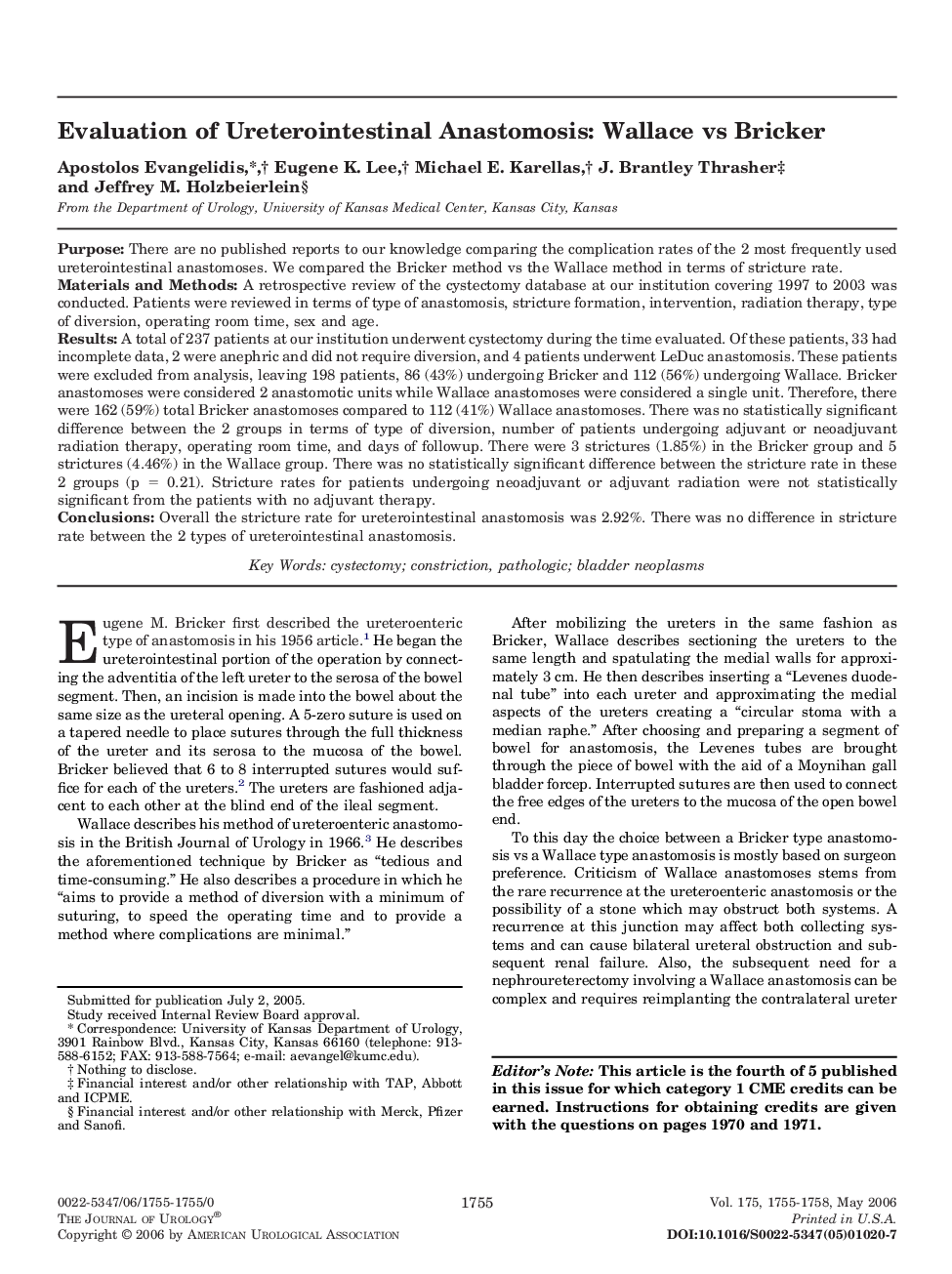| Article ID | Journal | Published Year | Pages | File Type |
|---|---|---|---|---|
| 3876872 | The Journal of Urology | 2006 | 4 Pages |
PurposeThere are no published reports to our knowledge comparing the complication rates of the 2 most frequently used ureterointestinal anastomoses. We compared the Bricker method vs the Wallace method in terms of stricture rate.Materials and MethodsA retrospective review of the cystectomy database at our institution covering 1997 to 2003 was conducted. Patients were reviewed in terms of type of anastomosis, stricture formation, intervention, radiation therapy, type of diversion, operating room time, sex and age.ResultsA total of 237 patients at our institution underwent cystectomy during the time evaluated. Of these patients, 33 had incomplete data, 2 were anephric and did not require diversion, and 4 patients underwent LeDuc anastomosis. These patients were excluded from analysis, leaving 198 patients, 86 (43%) undergoing Bricker and 112 (56%) undergoing Wallace. Bricker anastomoses were considered 2 anastomotic units while Wallace anastomoses were considered a single unit. Therefore, there were 162 (59%) total Bricker anastomoses compared to 112 (41%) Wallace anastomoses. There was no statistically significant difference between the 2 groups in terms of type of diversion, number of patients undergoing adjuvant or neoadjuvant radiation therapy, operating room time, and days of followup. There were 3 strictures (1.85%) in the Bricker group and 5 strictures (4.46%) in the Wallace group. There was no statistically significant difference between the stricture rate in these 2 groups (p = 0.21). Stricture rates for patients undergoing neoadjuvant or adjuvant radiation were not statistically significant from the patients with no adjuvant therapy.ConclusionsOverall the stricture rate for ureterointestinal anastomosis was 2.92%. There was no difference in stricture rate between the 2 types of ureterointestinal anastomosis.
